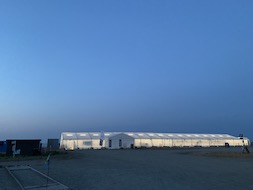Infrastructures are integral to human life. They are also ubiquitous as electricity networks, water pipes, industrial food production, sewage systems, information and communication technologies, financial systems, and much more. They permeate our societies and can be found in all corners of the world (Winthereik & Wahlberg, in press).
Offering a vantage point from which to understand power relations, stability and change, identity, meaning-making, future-making, and politics, infrastructures are no longer solely a concern of computer scientists and engineers. Within cultural studies, anthropology, sociology, human geography, political science, and pedagogy infrastructure has become a new and fascinating conceptual lens for inquiry into human life and organizing.
Infrastructure studies have taught us that as infrastructures grow, their purposes tend to change. This has been described as ‘function creep’, but is more aptly seen as both a change in the functioning of the infrastructure itself and as a transformation of its context or field of operation. Digital infrastructures seem to be especially prone to this kind of change due to the many potentialities ascribed to them.
One example of such transformation of purpose is when a digital health record that was put in place to standardize registrations of health information by the use of diagnostic codes, becomes a tool for financial accounting. Or when Covid-19 testing infrastructure becomes the means of collecting biological material to map population genes. Or when facial recognition captures excess data on gender and ethnicity for God knows what other purposes.
In her book on surveillance capitalism Shozana Zuboff (2019) describes how technology companies (tech giants) utilize metadata about customers to predict new needs for products and services. Zuboff’s work marks an interesting moment in infrastructures studies, signalling how data has morphed from that which is transported through IT systems to that which enables companies to innovate. This means data have become infrastructure for services, even welfare services, as public sectors increasingly reimagine their services through data. Data – their potentialities and powers – are curious infrastructures, it seems, given the ambiguity about what ‘data’ are and aren’t (see entry on data, this volume). A complicated foundation, to say the least.
Fig. 1.: Covid-19 test center at dusk. In Denmark positive samples are sent for DNA sequencing at the National Genome Center. When tested consent for this is automatically given. Photo by Anders Kjærulff.
Author: Brit Ross Winthereik
Reference:
Winthereik BR and Wahlberg A (2022) Infrastructuring. Handbook for the anthropology of technology. Palgrave.
Zuboff S (2019) The age of surveillance capitalism: The fight for a human future at the new frontier of power: Barack Obama’s books of 2019. Profile books.
